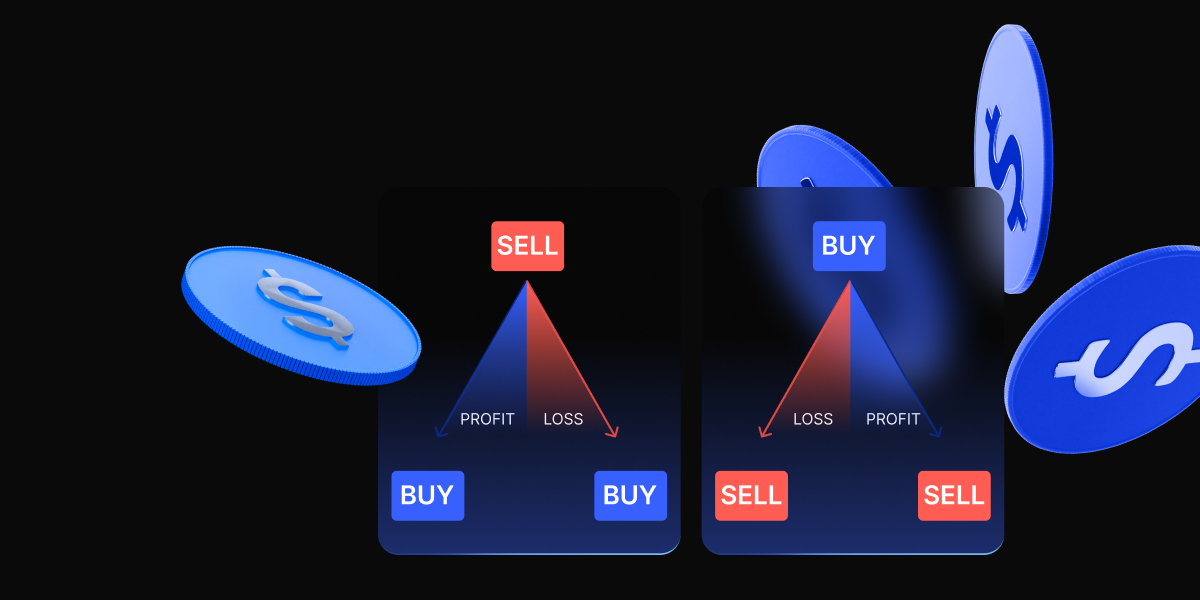When traders talk about major pairs, USD/CHF doesn’t always grab the spotlight… but maybe it should. On one side, you’ve got the US dollar, a global benchmark. On the other, the Swiss franc, a long-standing safe haven in times of uncertainty. Put them together, and you get a currency pair that behaves with precision. Until it doesn’t.
This pair reacts quickly to global shifts and central bank moves. It’s clean enough for technical traders, but responsive enough to reward those who follow the fundamentals. Whether you’re just looking to start trading or adding new setups to an existing strategy, USD/CHF offers a unique blend of stability, momentum, and surprise.
Let’s break down what moves it, how to trade it, and why it holds a strong position in the forex landscape.
Today (28 December 2025) USD/CHF is trading at $0.82151. USD/CHF price has changed by -0.6% in the last 24 hours.
An introduction to USD/CHF: why this pair matters for traders
USD/CHF is one of the most closely watched combinations in the forex market. It represents the exchange rate between the US dollar and the Swiss franc, two of the most powerful currencies in global finance. While not the most heavily traded currency by volume, USD/CHF trading plays a critical role during times of economic uncertainty.
The Swiss franc has long been regarded as a safe haven currency, attracting investors looking to protect capital when volatility spikes or major events unfold. This makes USD/CHF especially sensitive to shifts in market sentiment, offering distinct trading opportunities that can’t always be found in other markets.
The USD/CHF chart often reflects changes in interest rates, employment figures, and decisions from the Swiss National Bank, creating space for a wide range of trading strategies. These include short-term plays using momentum indicators, as well as longer-term approaches.
Key features of the USD/CHF currency pair
As we’ve already established, one of the most defining traits of USD/CHF trading is its high liquidity. The pair consistently attracts strong interest across both retail and institutional desks, which helps keep spreads tight. This is particularly true during the European session, when both the Swiss franc and US dollar are actively traded.
The pair’s volatility tends to be moderate, making it appealing for those who prefer a balanced approach between steady movement and occasional spikes driven by economic data. While it doesn’t match the sheer volume of EUR/USD or USD/JPY, USD/CHF still ranks within the top ten forex pairs globally in terms of daily trading volume.
Historical price movements and global influences
Over the years, the USD/CHF pair has reflected more than just interest rates or inflation. It’s moved sharply in response to cross-border developments. During the Brexit referendum, for example, a surge in demand for the safe haven Swiss franc caused the pair to slide, as investors pulled money away from perceived risk.
Similarly, when the Federal Reserve hinted at tightening monetary policy in 2018, the US dollar picked up momentum, which caused the USD/CHF trading pair to rise.
The SNB also plays a crucial role. Historically known for interventions to limit CHF appreciation, any unexpected move by the SNB can send shockwaves through the market. Understanding how USD/CHF has reacted in the past helps traders craft more informed decisions.
What drives the USD/CHF exchange rate?
Understanding what moves the USD/CHF pair is essential for making smart trading decisions. Like most major currency pairs, its exchange rate reacts to a mix of monetary policy and the shifting tides of geopolitics.
Knowing these drivers can help you spot better trading opportunities.
Monetary policy – Federal Reserve vs Swiss National Bank
The Fed’s focus is often on controlling inflation, supporting employment, and adjusting interest rates to manage the US dollar’s strength. When the Fed signals a rate hike, USD/CHF tends to climb.
On the flip side, the SNB has a history of intervening in currency markets. Policy moves can shift market sentiment quickly, and even a slight change in tone from either central bank can trigger noticeable price swings.
Economic data and political uncertainty
Beyond rate policy, both the US dollar and Swiss franc respond to major economic data releases. A stronger-than-expected jobs report out of the US, for example, might drive demand for the dollar, which in results, pushes the pair higher.
But it’s not just numbers. Political events like elections, referenda, or even tensions around global trade deals can also spark moves. In a world of fast-moving headlines, the forex market doesn’t wait long to react.
Market sentiment and news impact
Sometimes it’s not the data itself, but how traders feel about it that matters. Market sentiment, driven by trader psychology, media narratives, or sudden news, can lead to short-term volatility, even when fundamentals remain the same.
Best times to trade USD/CHF
In trading, timing can be just as important as strategy. Since the USD/CHF pair reflects both US and Swiss market activity, price movements tend to follow a predictable rhythm tied to global trading sessions.
Overlap periods and volatility
The most active window for USD/CHF is during the overlap between European and US sessions. This is when trading volume peaks, price swings are more pronounced, and the conditions favour those looking for tighter entries and exits.
Tracking economic announcements
Knowing when to trade is just as important as knowing why. Using an economic calendar helps traders stay ahead of the market, allowing them to time entries and exits with better precision.
Technical analysis for USD/CHF trading
Reading the USD/CHF chart isn’t just about watching the price move. It’s all about spotting patterns, timing entries, and understanding where value may shift.
Essential indicators and price levels
Three core indicators stand out when analysing USD/CHF:
- RSI (Relative Strength Index): Highlights oversold conditions or overheated rallies. A high RSI may suggest a pullback, while a low reading points to potential upside.
- MACD (Moving Average Convergence Divergence): Tracks trend momentum. Traders often watch for crossovers or divergence to catch early shifts.
- Moving Averages: These help define overall trend direction and reveal dynamic support or resistance levels. On USD/CHF, such levels often form around psychological round numbers or key price zones from previous moves.
Chart patterns: from flags to pennants
Classic patterns still hold their value when it comes to reading USD/CHF charts. Let’s take a look at few of them:
- Flags: Typically forms after a sharp price move, either up or down. It represents a short period of consolidation. Price tends to move sideways or slightly against the trend before continuing in the original direction. Think of them as pauses mid-move, often seen as breathing space before momentum kicks back in.
- Pennants: Similar to flags in context but shaped differently. Instead of parallel lines, pennants are marked by converging trendlines, creating a small triangle. When price breaks out of this tightening range, the follow-through is often fast and directional.
Interpreting candlestick charts
Candlesticks reveal market psychology in visual form. A few worth knowing:
- Doji: A small-bodied candle with long wicks on both ends. It signals indecision in the market and often appears before a potential reversal.
- Engulfing: Forms when a larger candle fully wraps the one before it. This pattern often marks a shift in momentum and a possible trend change.
- Hammer: Usually found after a downtrend, it features a long lower wick and a small body at the top. It usually hints at a bullish reversal.
Popular strategies for trading USD/CHF
There’s no single way to trade USD/CHF, as this currency pair adapts to different styles. Below are some of the most popular strategies among traders, depending on their goals, timeframes, and risk appetite.
Intraday and scalping approaches
USD/CHF offers tight spreads and steady price movement, making it well-suited for short-term trading strategies like scalping and intraday setups. These approaches rely on fast execution, small percentage gains, and precise timing with technical indicators.
Trading on economic news
News traders rely on volatility.
Some use a straddle strategy, placing buy and sell orders on either side of current price ahead of a release. Others wait for a clean breakout once the market digests the news. In both cases, knowing how to interpret high-impact events is key to reducing cost and improving profit potential.
Swing and longer-term strategies
Swing and position traders take a broader view, using a mix of technical analysis and macro insights. The goal is to catch medium-to-long-term trends, aligning entries with clear chart signals and fundamental shifts in value.
Strategies based on pair correlations
USD/CHF often moves in relation to other forex pairs and assets.
For example, it tends to move inversely to EUR/USD, since the Swiss franc and euro share economic ties. Comparing it with GBP/USD or even gold can also reveal useful divergence or confirmation. These correlations help fine-tune entry timing or avoid conflicting trades in correlated markets.
Trading USD/CHF with CFDs: practical tips and risks
Trading USD/CHF using CFDs (Contracts for Difference) allows traders to speculate on the price action of this currency pair without owning the actual us dollar or Swiss franc. With CFDs, you can go long or short, use leverage, and react quickly to market shifts.
But flexibility comes with risk. Leverage can amplify profit, but it also increases potential losses. That’s why it’s important to fully understand how CFDs work before placing any trade.
Advantages and drawbacks of CFDs
Here’s a quick overview of the pros and cons of trading USD/CHF with CFDs:
Pros:
- Traders can open positions with relatively low capital.
- Leverage gives access to larger positions than the initial deposit allows.
- CFDs offer flexibility to take advantage of both rising and falling market conditions.
Cons:
- Leverage increases exposure to high risk, making even small price moves potentially costly.
- Overnight fees may apply when positions are held beyond a single session.
- Successful CFD trading requires close analysis and disciplined risk management at all times.
A step-by-step guide to opening a trade
Here are the key steps to get started with a USD/CHF CFD trade:
- Select the pair: Open your account on a platform of your choice and pick the Dollar to Swiss Franc pair.
- Do your analysis: Use technical tools or fundamental analysis to identify possible setups and key support or resistance levels.
- Set your risk parameters: Decide on stop-loss and take-profit points based on your strategy and limits.
- Place the trade: Choose whether to go long or short, depending on the expected direction of the exchange rate.
Calculating margin and selecting leverage
Let’s look at a simple example:
- If you open a $10,000 position on USD/CHF with 20:1 leverage, you’ll need $500 in margin.
- With 50:1 leverage, the required margin drops to $200 (10,000 ÷ 50).
While higher leverage lowers upfront cost, it increases your exposure. A small move in the market can either lead to quick profit, but also to a fast loss. Choosing the right leverage means balancing risk and money management, not chasing the biggest number.
Managing risk while trading USD/CHF
No matter how strong the analysis or setup, consistent risk management is what separates smart traders from impulsive ones.
The USD/CHF currency pair can be stable, but it’s still part of a high-risk market, especially when leverage is involved. Protecting your account means setting boundaries before you ever place your trade.
Setting stop-loss and take-profit
A stop-loss limits how much money a trader is willing to lose on a single position. A take-profit locks in gains once the price reaches a set target.
For example, if a trader enters USD/CHF at 0.9000, they might set a stop-loss at 0.8950 and a take-profit at 0.9100. This protects against potential losses while allowing room for profit if the move goes as planned.
Defining daily risk limits
It’s easy to overtrade when emotions take over. That’s why many experienced traders set a daily loss cap, often no more than 2–3% of their total account value. Once that limit is hit, they stop for the day.
Building a simple risk management plan
Every trader needs a clear plan. How much to risk per trade, how many setups to take per session, and when to walk away.
Writing it down helps reinforce discipline. Following a personal set of rules helps maintain control when volatility spikes or trades go sideways.
Common trading mistakes to avoid
Even with the right tools and a solid strategy, many investors struggle due to simple, avoidable mistakes. Here are some of the most common pitfalls when trading CFDs on USD/CHF and how to steer clear of them.
Overtrading
Opening too many trades in a short time, often driven by boredom or frustration, can quickly drain your account. Just because the market is moving doesn’t mean every setup is worth taking. Fewer, well-timed trades tend to protect both your money and your mindset.
Letting emotions drive decisions
Chasing after missed moves or trying to earn back a loss through aggressive, impulsive trades, can backfire fast. Emotional trading leads to poor risk decisions.
Overlooking fundamental news
Even the cleanest technical setup can fall apart if a major economic event hits the forex world. Ignoring central bank updates, inflation reports, or global headlines can turn a promising USD/CHF position into an unexpected loss. Stay aware of what’s moving currencies, not just what’s on the chart.
How to start USD/CHF trading
Getting started on a platform like PrimeXBT is fast, straightforward, and doesn’t require a large amount of money. Here’s how to begin:
- Create an account: Sign up on PrimeXBT and complete the basic requirements for account verification.
- Fund your wallet: Deposit funds to access the full range of available markets.
- Select the pair: Choose the dollar Swiss franc pair from the forex section.
- Analyse and plan: Use indicators, charts, or economic news to prepare your entry and set risk levels.
- Place your trade: Decide to buy or sell, set your stop-loss and take-profit levels, and monitor your account accordingly.
With CFDs, traders can speculate on USD/CHF movements in either direction, benefiting from flexibility while keeping an eye on overall cost and volatility.
Final thoughts
USD/CHF may not always make headlines, but it consistently delivers real opportunities for informed traders. Its unique mix of safe haven currency behaviour, steady price action, and global sensitivity makes it a smart choice for both short- and long-term strategies.
Whether you’re new to trading CFDs or expanding beyond other markets, mastering this currency pair starts with understanding the fundamentals, applying solid analysis, and managing risk every step of the way. With the right plan and the right platform, trading USD/CHF becomes not just possible, but practical.
Is USDCHF good to trade?
Yes, USD/CHF is a solid pair for both new and experienced traders due to its high liquidity and strong response to global economic events.
How to trade USDCHF successfully?
Successful USDCHF trading comes down to combining technical indicators with real-time economic data, managing risk properly, and staying alert to shifts in market sentiment.
What is the best time to trade USDCHF?
The best time to trade USD/CHF is during the European session and early US hours, when trading volume is at the highest.
What makes USDCHF move?
USD/CHF moves in response to economic conditions, central bank decisions and shifts in global sentiment. This is especially true during times of uncertainty when its safe-haven status becomes more significant.
The content provided here is for informational purposes only. It is not intended as personal investment advice and does not constitute a solicitation or invitation to engage in any financial transactions, investments, or related activities. Past performance is not a reliable indicator of future results.
The financial products offered by the Company are complex and come with a high risk of losing money rapidly due to leverage. These products may not be suitable for all investors. Before engaging, you should consider whether you understand how these leveraged products work and whether you can afford the high risk of losing your money.
The Company does not accept clients from the Restricted Jurisdictions as indicated in our website/ T&C. Some services or products may not be available in your jurisdiction.
The applicable legal entity and its respective products and services depend on the client’s country of residence and the entity with which the client has established a contractual relationship during registration.




